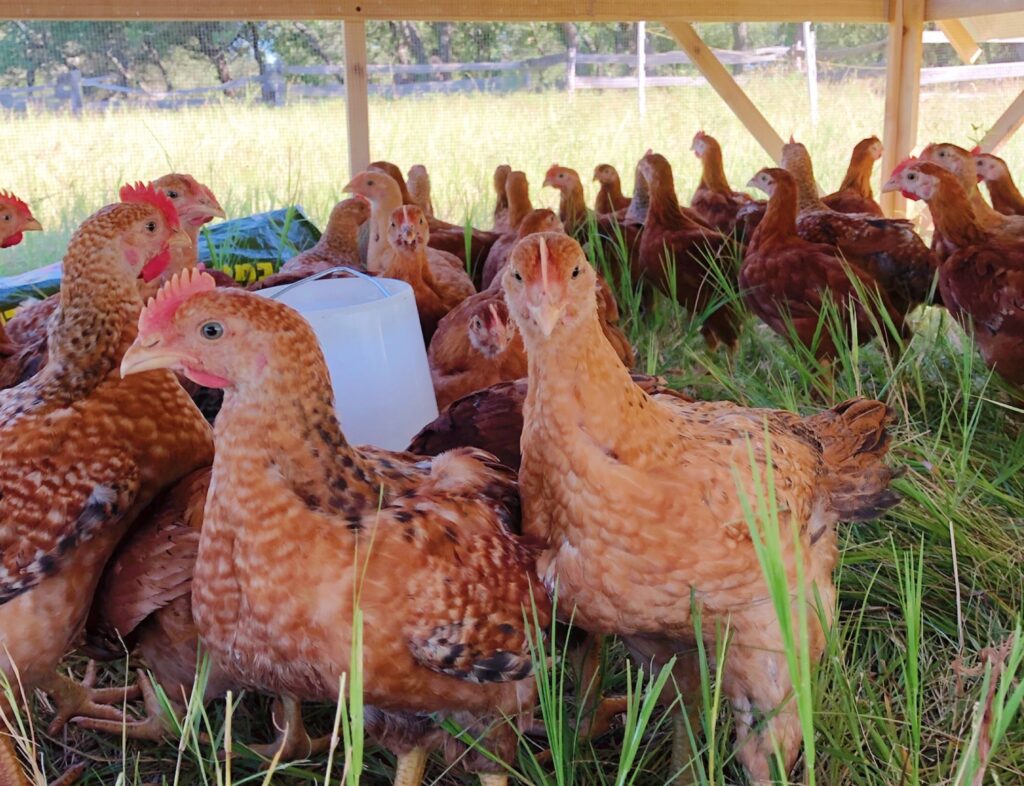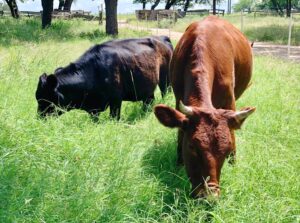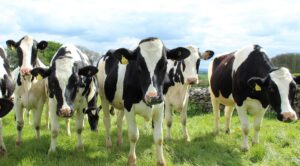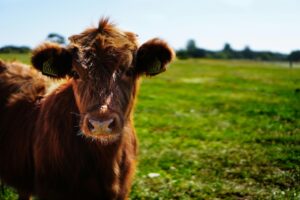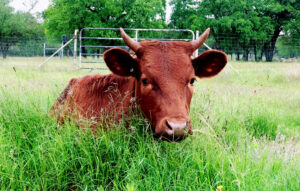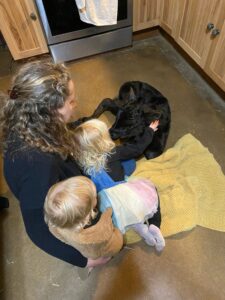Regenerative agriculture is a holistic approach to farming that aims to restore and improve soil health. One key aspect of regenerative agriculture, and one championed by Joel Salatin, is the use of chickens and cattle in a symbiotic relationship to regenerate soil health.
Chickens consume the maggots found in the manure produced by cattle, thus playing an an important role in controlling pests and insects, which can help to reduce the need for chemical pesticides, and in turn, the chickens can help to break down the manure and spread it evenly throughout the pasture. This practice not only improves soil fertility but also benefits the environment, enhances biodiversity, and ensures sustainable food production. Follow these steps to get started:
1. Plan Your Grazing System
- Assess your ranch’s layout and size, and design a rotational grazing system that suits your specific conditions. Divide your land into paddocks or pastures, ensuring they are appropriately sized for your livestock and easy to manage.
- Your rotational grazing system should include moving them to a new pasture every day or every few days. This allows the pasture to recover and regrow while also providing a fresh source of forage for the cattle.
2. Choose the Right Cattle Breeds
- Select cattle breeds that are well-suited to your climate and land.
3. Establish Pasture Diversity
- Promote biodiversity in your pastures by planting a variety of forage species. Grasses, legumes, and other plants create a well-balanced diet for cattle and improve soil health by enhancing root systems and nutrient cycling.
4. Utilize Electric Fencing
- Electric fencing is a valuable tool for managing your rotational grazing system. It allows you to easily control where your cattle graze and when they move to the next paddock. Moveable electric fencing can be quickly reconfigured as needed. We recommend the below items from Premier 1 Supplies.
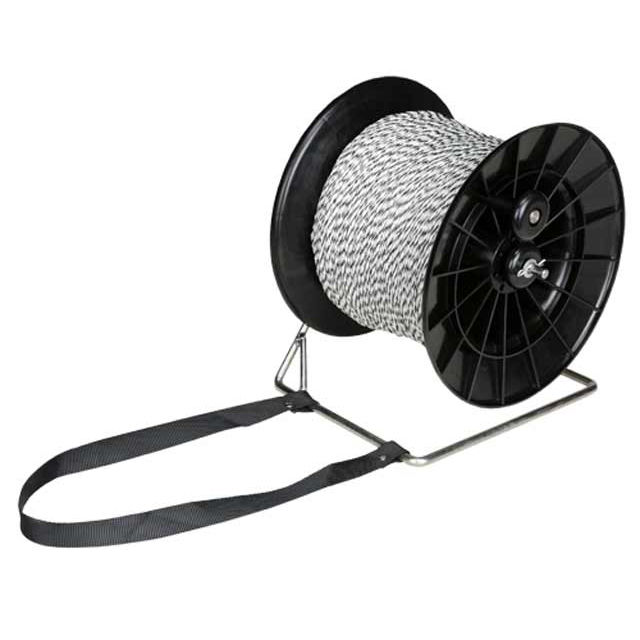
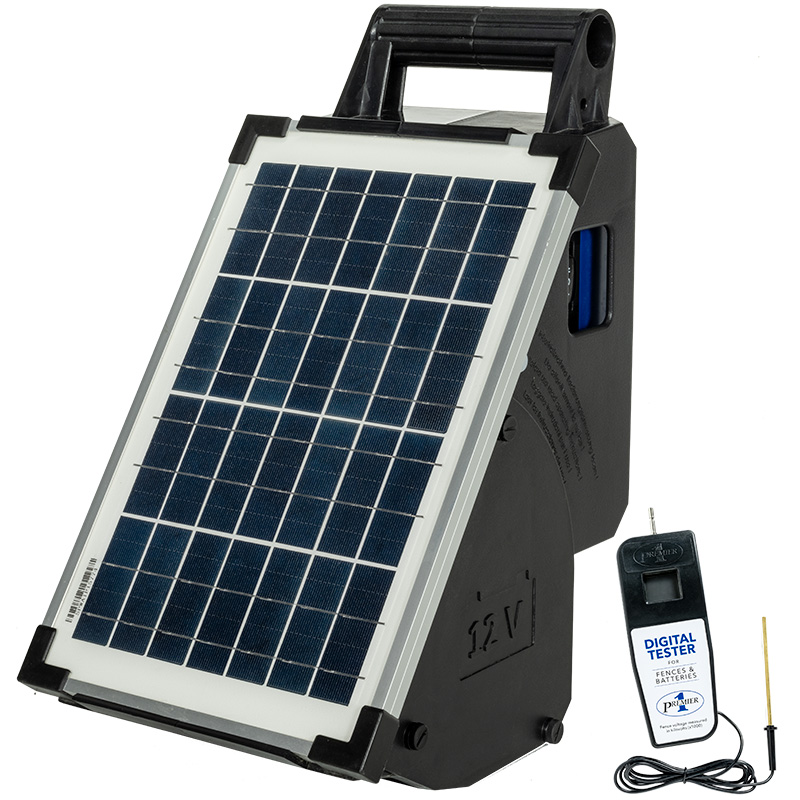
5. Implement Rotational Grazing
- Rotate the cattle through your divided paddocks them at regular intervals. The goal is to prevent overgrazing and give the land time to recover. Move the cattle to a new paddock when the forage in the current one is grazed down to a specific height, typically around 3-4 inches.
6. Introduce Chicken Tractors
- Implement chicken tractors in your grazing system by placing them in paddocks after the cattle have moved. Tractors are be portable, enclosed structures that house chickens. Chickens will forage for insects, weed seeds, and consume fly larvae while also spreading manure across the pasture.
7. Monitor and Adapt
- Regularly monitor the condition of your pastures and adjust your grazing intervals based on your observations. Over time, you’ll develop a keen sense of when it’s time to rotate your cattle to maintain healthy pastures and soil.
8. Practice Rest and Recovery
- Allow your paddocks to rest between grazing periods to recover fully. During this rest period, plant growth and soil regeneration occur. The length of the rest period will vary depending on your soil health, climate, and forage growth rate.
9. Address Soil Health
- As you implement your rotational grazing system, you’ll notice improvements in soil health. The addition of chicken manure and the resting periods will enhance soil fertility. Eliminate the use of synthetic fertilizers and pesticides to encourage natural processes.
- Plant cover crops as needed in between grazing periods to help improve soil health and fertility. Cover crops such as clover, alfalfa, and rye can help to improve soil structure and increase the amount of organic matter in the soil.
10. Maintain Animal Welfare
- Ensure that your cattle and chickens are healthy and well-cared for. Adequate nutrition, clean water, shelter, and proper healthcare are essential to maintaining the well-being of your animals.
11. Record Keeping
- Keep detailed records of your grazing management, including grazing dates, forage quality, and any observed changes in soil health. This data will help you make informed decisions for continuous improvement.
12. Seek Resources and Support
- Consider joining local farming organizations or online communities to connect with like-minded individuals who can offer guidance and support.
Over time, you’ll witness increased soil fertility, improved pasture quality, and a more sustainable and resilient ranching operation. This regenerative approach not only benefits your land but also contributes to a more sustainable and environmentally-friendly agricultural system. With regenerative agriculture practices, the soil will be more resilient to drought, erosion and will sequester more carbon from the atmosphere.
On a final note: regenerative agriculture is a continuous process and like all good things it requires patience and dedication, or as we like to say, grit, but the benefits are beyond worth the effort.
